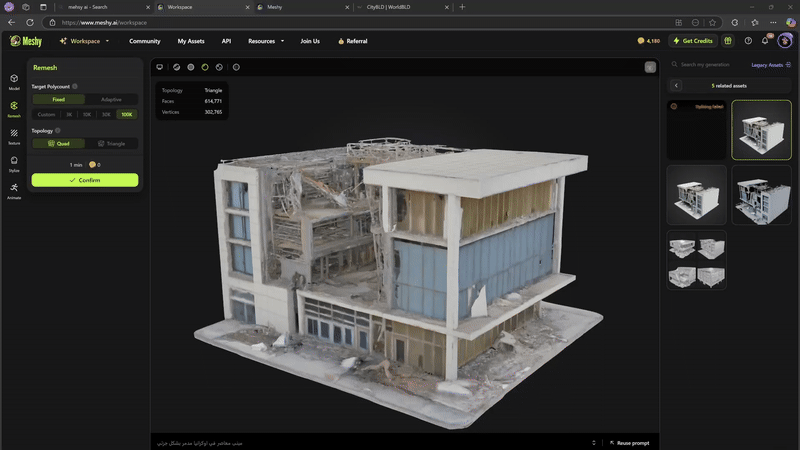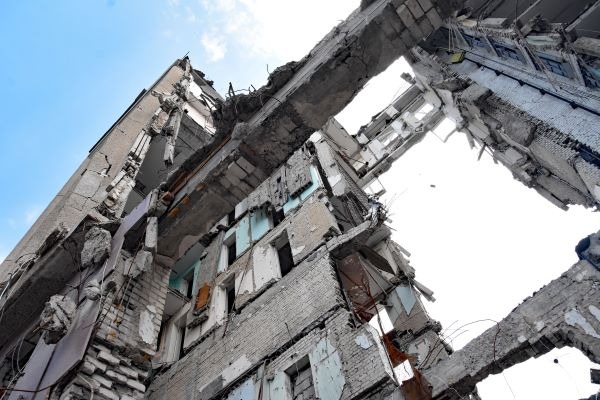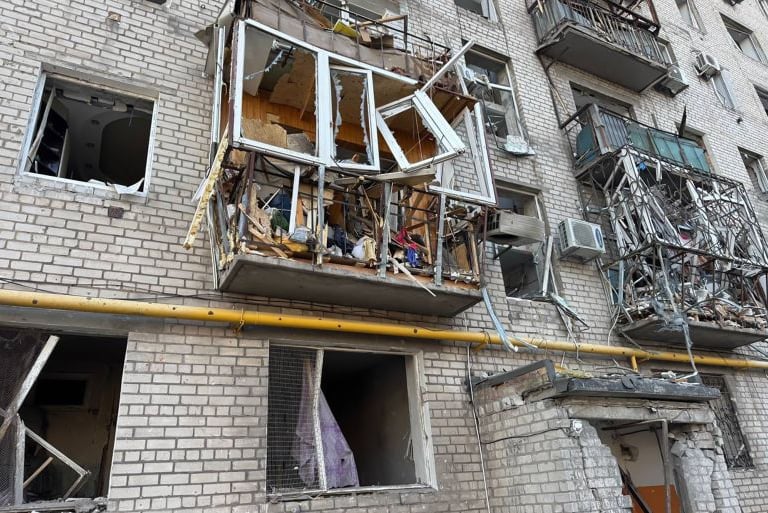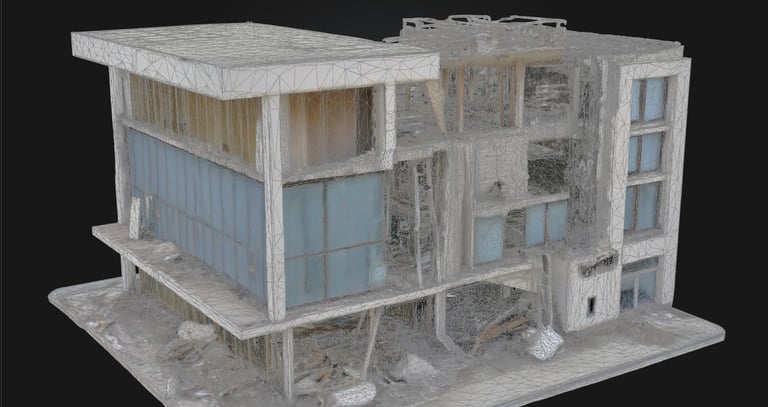Transforming War Zone Journalism into Virtual Environments: A Procedural AI Approach


Introduction
The transformation of journalistic photographs from conflict zones into interactive three-dimensional models represents a significant technological advancement in digital media. This blog explores the technical process of converting standard photographic documentation into detailed 3D assets that can be incorporated into virtual environments without requiring specialized viewing equipment.
Technical Process: From 2D Photograph to 3D Model
1. Source Image Selection and Preparation
The process begins with selecting high-quality journalistic photographs documenting war-damaged structures. Ideal source images include:
Multiple angles of the same structure when available
Sufficient environmental context surrounding the building
Clear depiction of architectural features and damage patterns
Proper lighting to distinguish structural elements
2. AI-Powered Image Analysis
Selected photographs undergo comprehensive analysis through specialized AI algorithms that:
Identify architectural elements and their spatial relationships
Analyze structural damage patterns and material properties
Determine lighting conditions and surface textures
Establish environmental context and spatial relationships
3. Procedural 3D Generation
Using advanced procedural generation techniques, the AI system:
Extrapolates complete building geometry from partial photographic information
Reconstructs damaged sections based on architectural principles and physics
Generates volumetric data representing both visible and inferred portions of the structure
Creates a preliminary 3D model with appropriate proportions and scale
4. Detail and Damage Modeling
The system then enhances the preliminary model by:
Applying procedurally generated damage patterns consistent with the photographic evidence
Introducing structural deformation based on material properties and damage type
Adding environmental debris and contextual elements
Implementing appropriate surface textures derived from the original photographs
5. Export to Meshy AI and Remeshing
The processed model is then:
Exported to specialized optimization platforms like Meshy AI
Converted from quad-based geometry to triangular meshes
Optimized for performance in real-time rendering engines
Prepared for compatibility with Unreal Engine
6. Integration with Unreal Engine
The final stage involves:
Importing the optimized model into Unreal Engine
Implementing proper lighting and environmental effects
Adding interactive elements where appropriate
Ensuring proper scale and navigation for user exploration
Practical Benefits of This Approach
1. Safety and Access Benefits
Personnel Safety: Eliminates the need to send journalists or 3D scanning teams into dangerous conflict zones
Access to Restricted Areas: Enables virtual reconstruction of locations that are physically inaccessible
Temporal Documentation: Preserves visual records of structures that may be further damaged or demolished
2. Production Efficiency
Cost Reduction: Significantly reduces production costs compared to on-site 3D scanning
Time Efficiency: Accelerates the creation of 3D assets from existing photographic records
Resource Optimization: Maximizes the utility of already-captured journalistic photographs
3. Content Applications
Cross-Platform Compatibility: Creates assets usable across television, web, and mobile platforms without requiring specialized VR/AR hardware
Educational Resources: Provides accurate environmental context for explaining complex conflict situations
Historical Documentation: Preserves digital records of structures affected by conflict
Enhanced Journalism: Enables more immersive and contextual reporting of conflict events
4. Technical Advantages
Scalability: Methodology can be applied to individual buildings or entire urban areas
Adaptability: Works with various types of source photography, from professional DSLR images to smartphone captures
Progressive Enhancement: Models can be refined as additional photographic evidence becomes available
Contextual Preservation: Maintains the authentic environmental and cultural context of the documented location
Conclusion
The procedural transformation of journalistic photographs into three-dimensional models represents a powerful convergence of AI technology and digital media production. By enabling the creation of immersive, explorable environments based on authentic photographic documentation, this approach offers new possibilities for news presentation, educational applications, and historical preservation. The ability to convert existing photographic assets into interactive 3D environments without specialized capture equipment makes this approach particularly valuable for documenting and representing conflict zones where traditional 3D capture would be impractical or dangerous.





